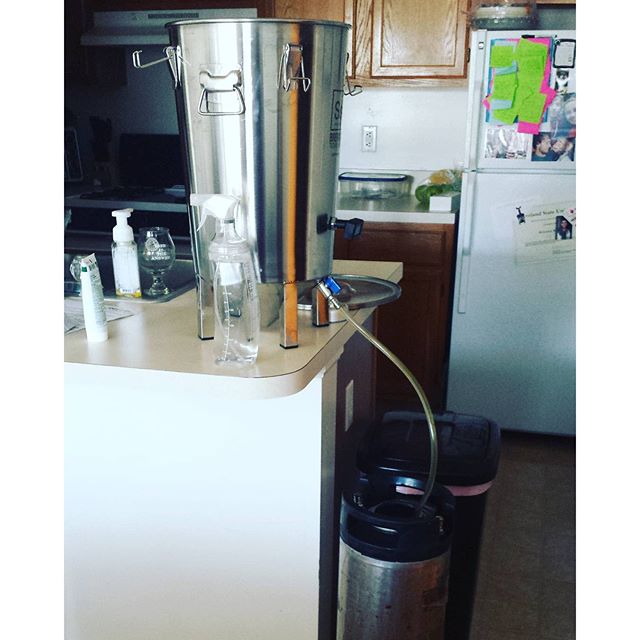Some thoughts on fermenters.
1. The conical bottom should be a 60 degree angle from the top cylinder.
This information came from the UC Davis Brewing School plus my own research.
2. You should remover dead yeast every other day or so. The other option is remove the wort from the dead yeast. This sounds risky to me. Why expose the wort when you can drain the dead yeast off the bottom?
3. If you want to age your beer why not transfer to a bright beer tank as there will always be some yeast left in the fermenter. There will probably be some in suspension but not enough to worry about.
4. Open fermentations works best in my opinion. A closed system puts pressure on the yeast. Our tanks are open and they work great at least for the last 18 years. For the bad guys to invade they must go up over and down into the wort all the while the co2 is pushing against them in the opposite direction. We do sell a sealing gasket for those died hards that say one must seal their tanks.
John S. Thomas
Hobby Beverage Equipment
www.minibrew.com
I bought two of the buckets (no temp control, I already have a ferm chamber) this summer. I love them. I still have several ale pails that are basically now becoming bulk grain storage buckets and the buckets I grind my grain into. Yes, I love them, they clean up really well, but you have to realize this. They are not necessarily true 'conicals' but the bottom does a nice job of collecting the yeast and preventing much fermentor loss.
Question. Where do you get this information?
I have no problem with point 1. the angle is what is required for gravity to move the yeast off the walls and prevent it from sticking.
My questions come in here
2. You should remover dead yeast every other day or so. The other option is remove the wort from the dead yeast. This sounds risky to me. Why expose the wort when you can drain the dead yeast off the bottom?
This is old, old information. There is zero need for a homebrewer to remove the yeast from the bottom of their fermentor. Especially while fermenting and if they pitch healthy yeast. Most of the information out there advocating removal of yeast is very dated, actually from the days of questionable yeast health, using baking yeast, etc. If you are pitching an adequate amount of healthy yeast you can leave the beer on the yeast cake for months (I have done it, even with very light blondes and cream ales) without and issue or off flavors.
Additionally, if sitting on yeast is a bad thing, how do you explain wheat beers, wits, etc?
3. If you want to age your beer why not transfer to a bright beer tank as there will always be some yeast left in the fermenter. There will probably be some in suspension but not enough to worry about.
True, with prolonged aging beer, you want to separate the beer from the yeast. You do not need a bright tank necessarily. You could use a carboy (if you are transferring to secondary you want minimal headspace to prevent oxidation. Or you could leave it in the primary for a little while. You could also just package and let it 'condition' in the bottle or keg. Secondaries aren't really necessary unless you are souring, adding fruit or wood, etc. Yeast makes beer, its not a foe to be fought.
4. Open fermentations works best in my opinion. A closed system puts pressure on the yeast. Our tanks are open and they work great at least for the last 18 years. For the bad guys to invade they must go up over and down into the wort all the while the co2 is pushing against them in the opposite direction. We do sell a sealing gasket for those died hards that say one must seal their tanks.
At least you state this is your opinion. Open fermentation is one animal, probably frightening and intimidating to newer brewers, especially those who have seen how much we all as a community stress sanitation. Closed homebrew scale systems do not really put all that much pressure on your beer/yeast. Heck, there are homebrewers who prefer to ferment under pressure and believe it makes good beer. Take a look at this monster of a thread.
Closed-system pressurized fermentation technique!
Your standard blowoff tube, s-shaped or 3 piece airlock is not really going to increase pressure on your fermenting beer any. Pressure is mainly a concern in larger scale commercial brewing systems as tens of feet of fermentor height will increase pressure by itself (and they usually use blowoff tubes as well).
My intent in this response is not to attack you personally, I just am strongly against the misinformation that just seems to not want to die about 'yeast autolysis' happening if your homebrewed beer is left on the yeast cake for more than 1 week and yeast being bad.
TL : DR - Yes I reccomend them. No, you do not need to worry so much about leaving beer on the yeast.





